While speed and precision are often the first things people think of when reflecting on Balanchine’s choreography, his ability to craft slow and exquisite adagios was just as impressive. Likewise was his teaching to develop dancers who could excel at both challenges. This excerpt from Suki Schorer on Balanchine Technique touches on Balanchine’s general approach to adagio in ballet class as well as one of the prevalent movements of those combinations – développé.

Balanchine had a well-known reputation for developing dancers who could move with great speed, clarity, and sharpness and for making ballets that used those qualities. Less well known is that he developed dancers who could move more slowly than most thought possible, and do it exquisitely. Adagio exercises were therefore an important part of his classes. When a movement is done slowly, there is more time to work on perfecting the form and shape; the dancer has time to correct and refine the line. Adagios also build the strength and stamina needed to sustain various shapes and slow, extended movements.
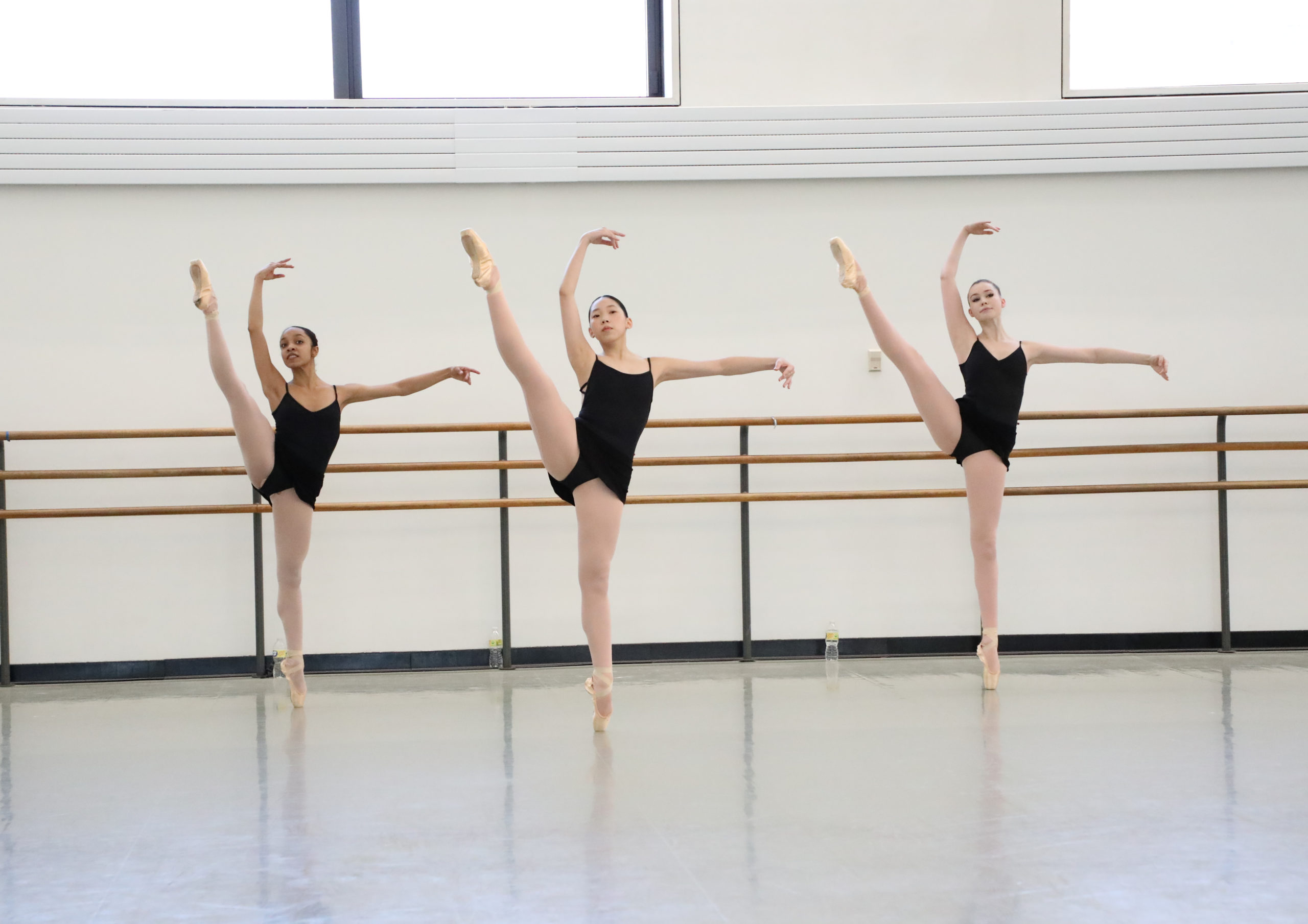
He taught his dancers to move beautifully, both slowly and quickly. However, beautiful movement is of great importance in adagio work, because the moment lasts a long time. A dancer starting and stopping, losing the sense of flow, of continuity, or moving slowly in a disjointed, uncoordinated way is not pleasing to watch. To achieve the most interesting and beautiful movement he wanted to see the dancer’s whole body participating – face and head, arms and chest, the entire torso, and so on. The energy of the movement should take over the dancer’s whole being so that even her breathing is part of it. This is true of slow and fast movement, but the absence of this quality can be more noticeable in adagio.
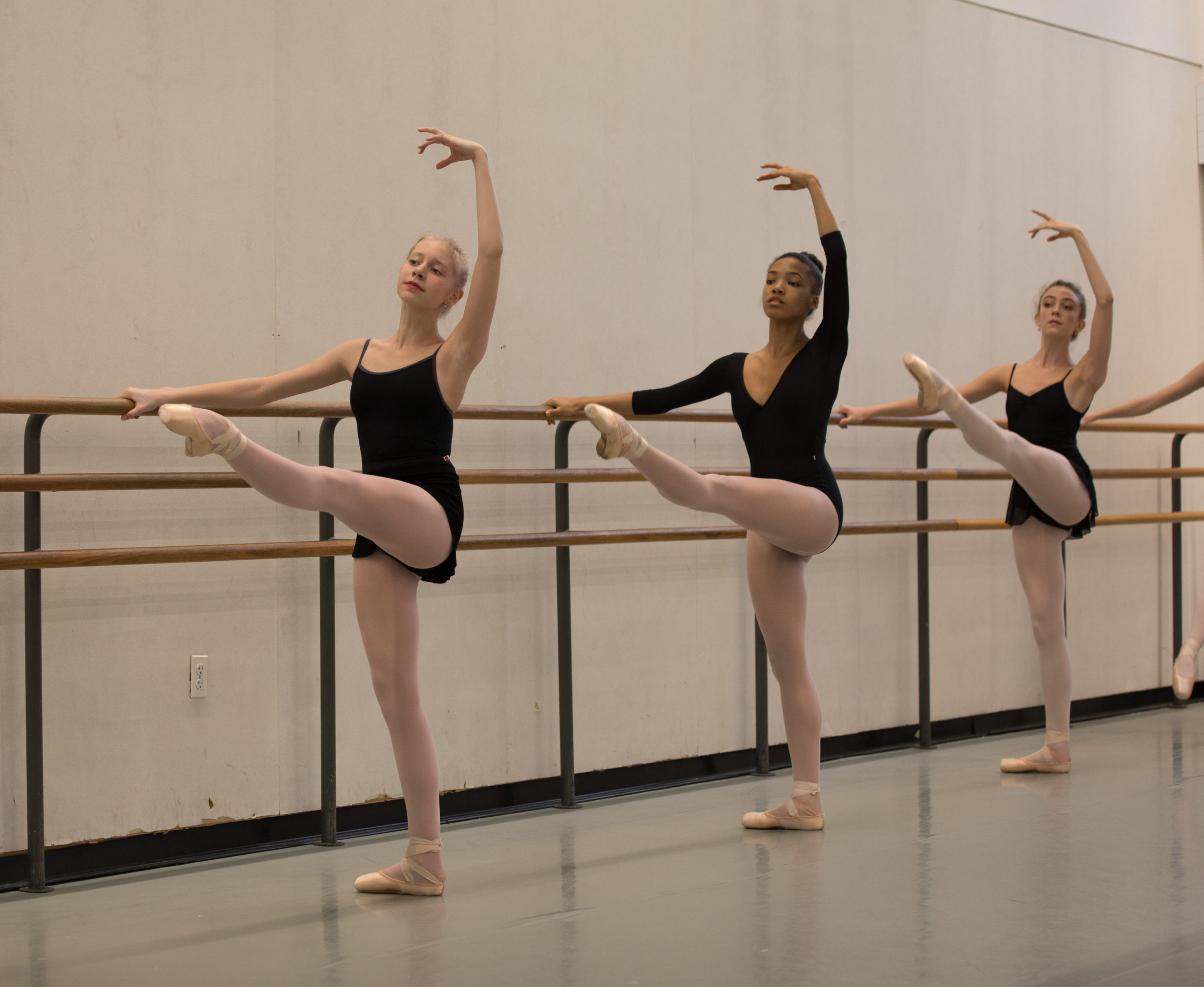
Adagio exercises were nearly always done with phrasing and accents to show the beginning and the end of the movement. But the movement was usually continuous until we reached the extended line; the phrasing and accents did not indicate points at which the dancer would stop or hold. When a dancer does développé, there is no letting the toes of the working foot rest on the floor to help her find her balance when she has picked her foot up out of fifth, nor is there jamming the toes into the supporting leg in passé, for example. The working leg does not settle in or down or relax in any way while executing a développé. Once the dancer reached the extended line, she “grew” in the held position so it did not look static and lifeless. Each movement must maintain a vibrant energy throughout.
(Schorer, 1999, p.123-124)
Développé
Mr. Balanchine gave développé exercises in many forms. We did développé on flat and in relevé, presenting the foot from floor level (pas de cheval) to above our head and with the working leg ending in attitude as well as straight.
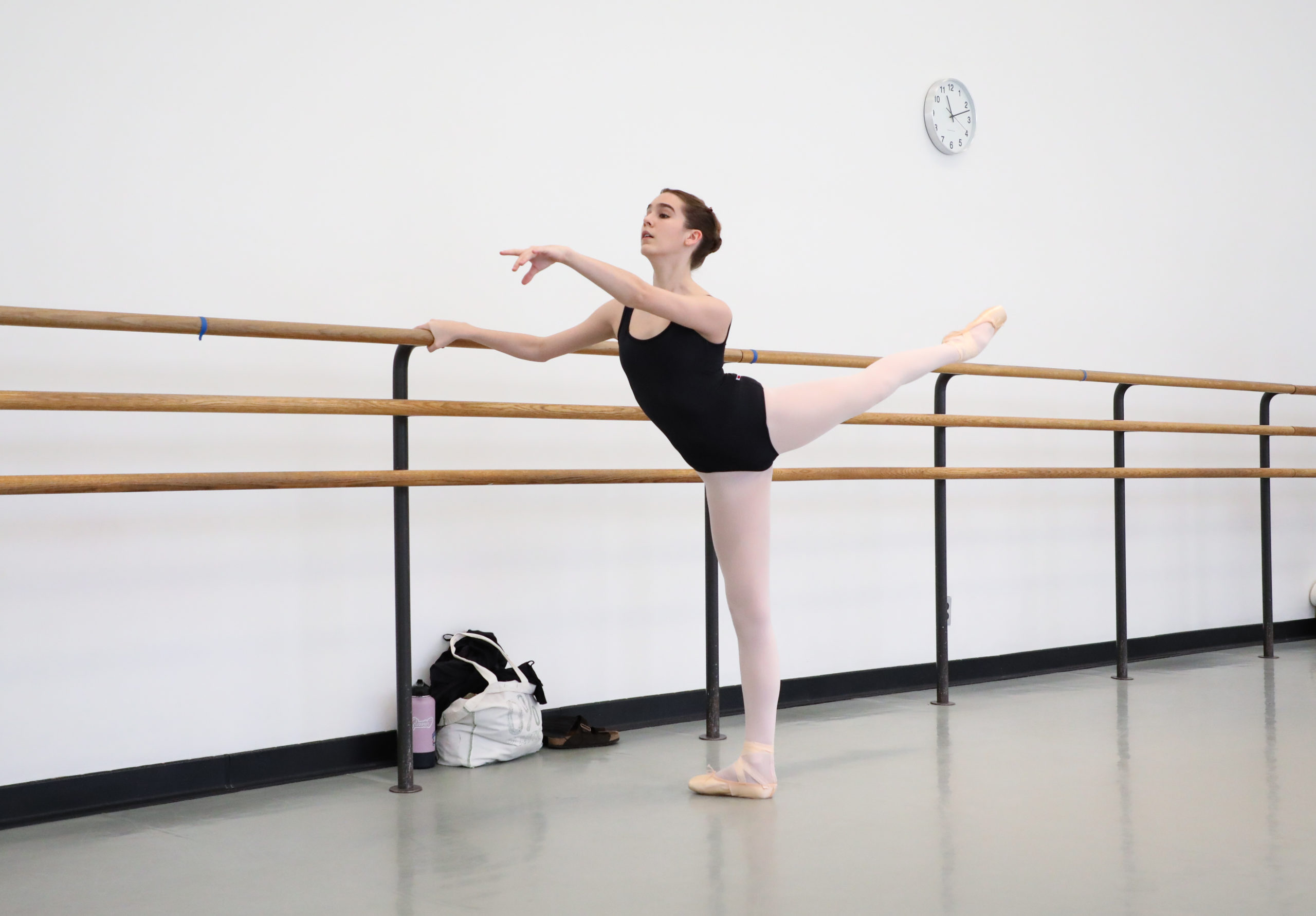
Certain material should be understood before working on développé. The technique for picking the foot off the floor is described in Sur le Cou-de-Pied and Coupé. When développé is done at hip level or higher, the foot goes up through passé and then, after the working knee has lifted even higher, extends. The foot usually returns to fifth in the way described in Battement Tendu.
The dancer’s precise awareness of the directions was also important in doing développé Mr. Balanchine’s way. Whether the working foot was in the air or on the floor, the toes had to be exactly front, side, or back. Mr. B also wanted the dancer to feel she was presenting or “serving” the working foot to the audience, no matter how high the développé, no matter which direction. As usual, maximum turnout was the norm throughout the movement, but in développé, as the working leg finished unfolding to the desired height, the dancer turned out even more, which might cause the leg to lower slightly…The finishing gesture articulates the sense that the working foot is being presented or served.
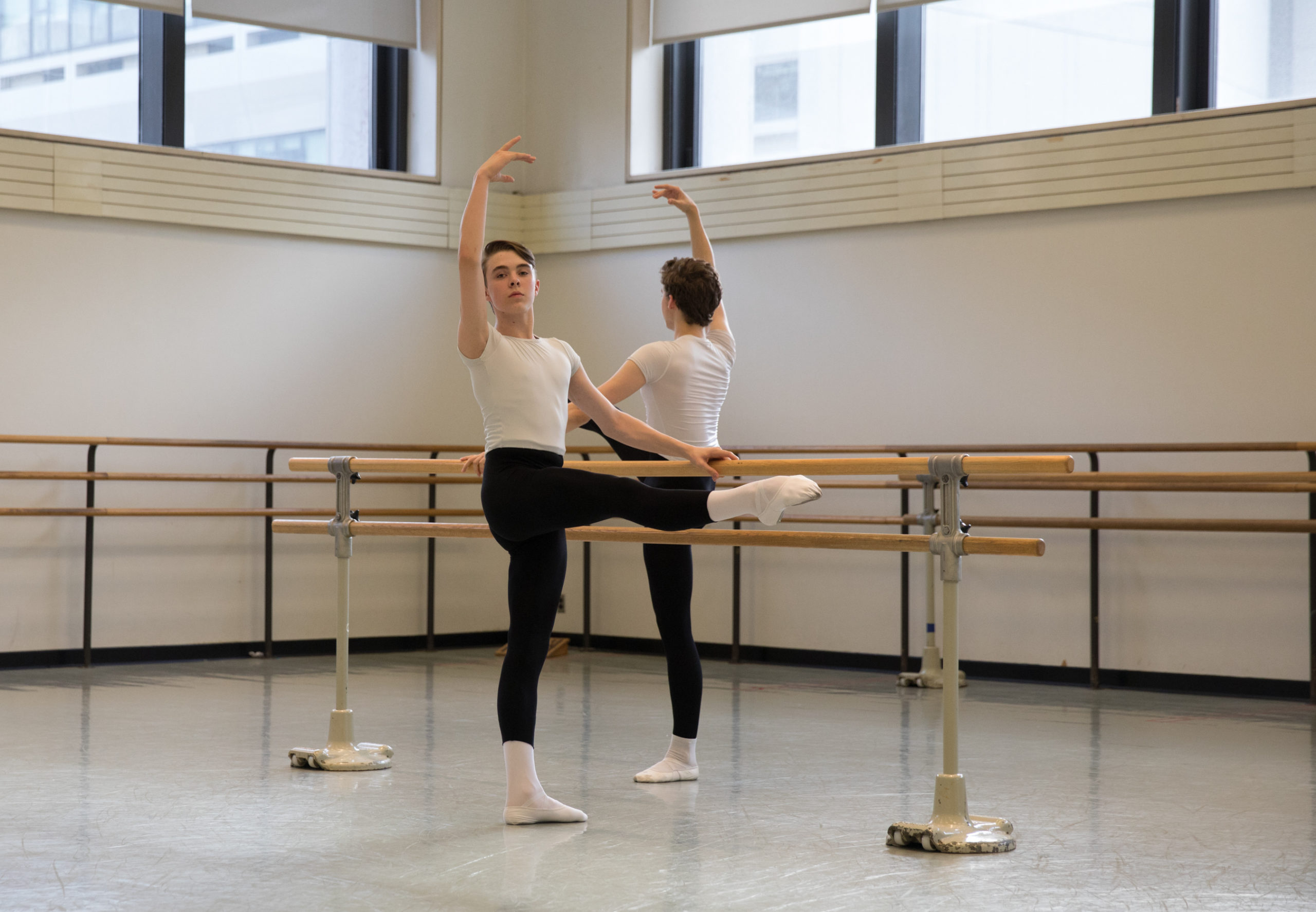
Concentrating on the final, extra turnout ruled out any uncontrolled throwing or kicking of the leg and foot into the air, which some dancers do because they are unaware of the correct form and others do just to maximize the extension. Balanchine also wanted the working foot brought back to the floor in control, rather than being allowed to drop, which often means it bangs down or slams into fifth position…
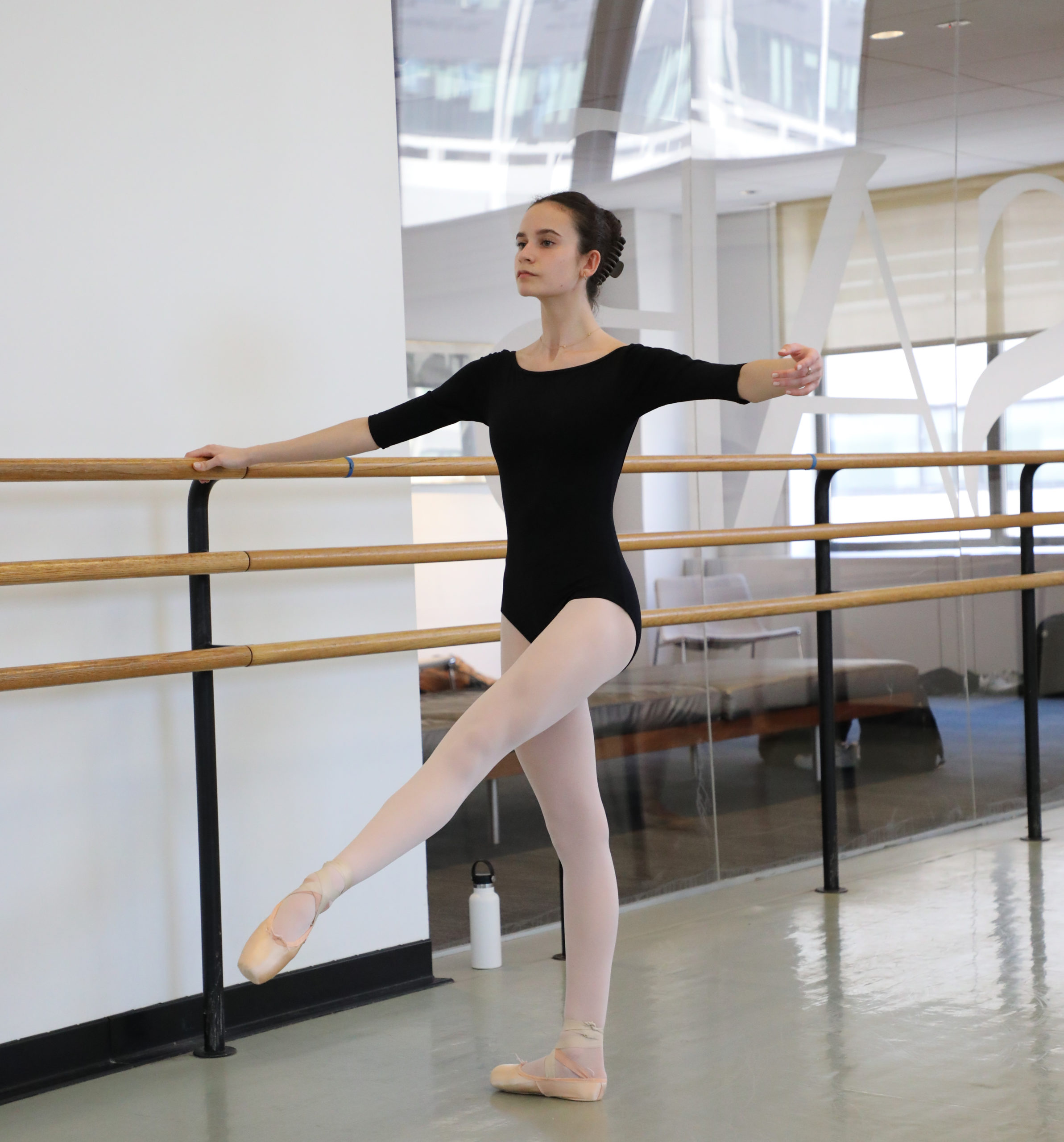
When Mr. Balanchine gave développé, the height of the presented foot was usually clearly specified, and he expected us to observe that carefully as we did the movement.
“You must know where your foot is going,” he might say, adding, “without looking at it.”
For example, in développé to forty-five degrees from fifth flat using the front foot, the dancer starts through sur le cou-de-pied, then lifts the working knee up and to the side as the foot points fully. The toes are drawn into and up the center of the supporting leg until they are about halfway up the lower leg. If the développé is front or side, she holds the working knee back, but lifts it slightly as the heel leads forward, ending by “serving” the foot directly front or to the side. The stretched leg makes a forty-five-degree angle. If the développé is back, she lifts the knee up and back, which opens the thigh as she extends the lower leg, ending with the foot placed directly to the back and the stretched leg at a forty-five-degree angle…
Développé front can start with the working foot in fifth back, as well as fifth front and vice versa. When the working foot has to “pass” the supporting leg to do développé, it does so at the level where the working leg begins to extend. It does not pass near the ankle and anticipate the direction of the développé. If starting from sous-sous (demi-pointe or full pointe), the working foot is already correctly shaped (heel forward; fully stretched arch.) There is no purpose to reshape it by wrapping it in sur le cou-de-pied. The only adjustment needed is by dancers on demi-pointe, since they have to point the ends of their toes.
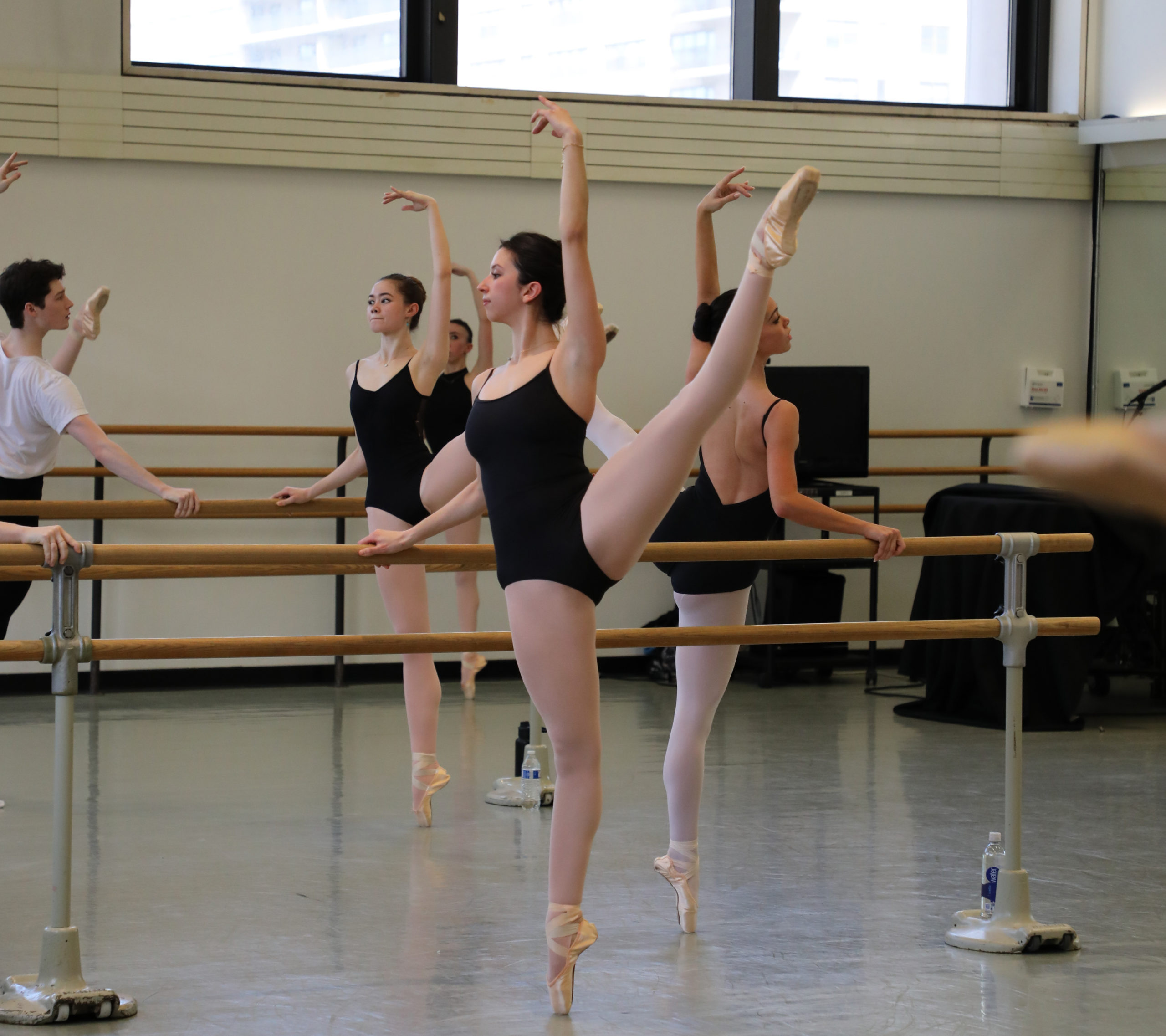
Although Mr. B certainly wanted “more” in extensions, just as he did in most aspects of the technique, it had to be achieved without losing the essential quality of the movement. The dancer starts a high développé front by coming to passé from fifth front or back, drawing the foot up the center of the supporting leg. She lifts her knee as high and as close to her body as she can. Then the working heel takes charge, leading the lower leg up and out so the heel is presented up with the additional turnout and the pointe is on the center line of the body. Développé side can start from fifth front or fifth back and continues to passé front or back. When the dancer has lifted her working knee to its maximum height and as close to her body as she can, she extends her lower leg so the foot is “served” exactly side.
|
Essential Details in Développé
Turning out a little more just as the knee straightens to present a fully stretched foot and leg; hold and show the extended line
Start on time, stay in time, finish on time
In high développés to the front and side, lift the knee as high and as close to the body as possible before beginning to extend the lower leg; to the back, lifting the thigh
In développés to the front, hips square and straight supporting leg
Exact directions, especially to the side, where there is a tendency to let the leg wander toward the front; and to the back, where there is a tendency to let the leg open slightly side
In développés to the back, supporting hip aligned, back straight, fully stretched, straight working leg
In all directions, stay pulled up, with the torso and chest lifted; do not sink into the hips or
lean back
|
(Schorer, 1999, p.89-94)
Schorer, S., Lee, C. R., & Rosegg, C. (1999). Suki Schorer on Balanchine Technique. A.A. Knopf.







